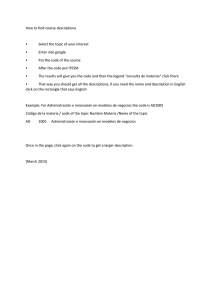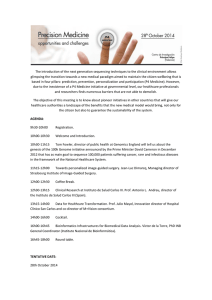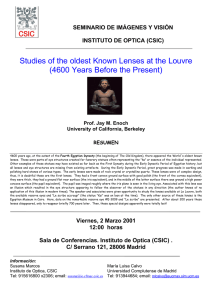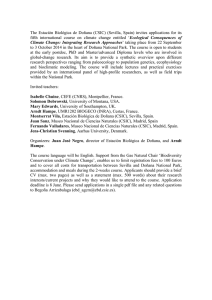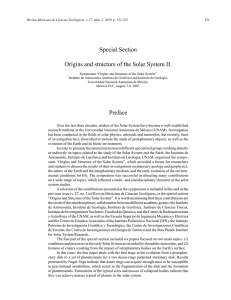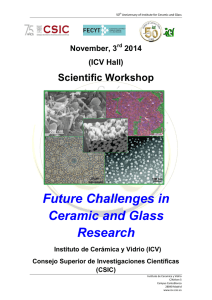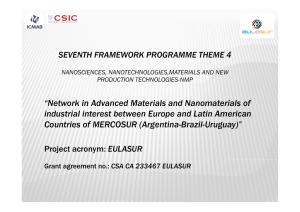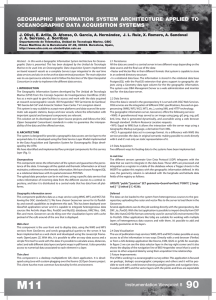New results for the astrophysical factor of the 4He(3He
Anuncio
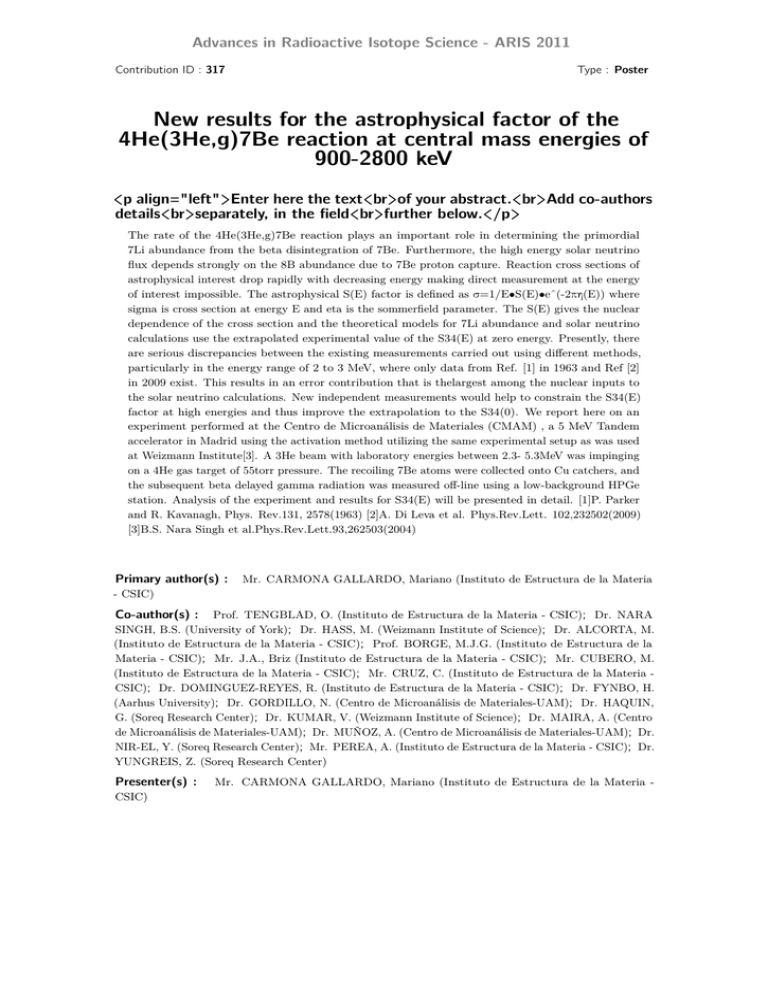
Advances in Radioactive Isotope Science - ARIS 2011 Contribution ID : 317 Type : Poster New results for the astrophysical factor of the 4He(3He,g)7Be reaction at central mass energies of 900-2800 keV <p align="left">Enter here the text<br>of your abstract.<br>Add co-authors details<br>separately, in the field<br>further below.</p> The rate of the 4He(3He,g)7Be reaction plays an important role in determining the primordial 7Li abundance from the beta disintegration of 7Be. Furthermore, the high energy solar neutrino flux depends strongly on the 8B abundance due to 7Be proton capture. Reaction cross sections of astrophysical interest drop rapidly with decreasing energy making direct measurement at the energy of interest impossible. The astrophysical S(E) factor is defined as σ=1/E•S(E)•eˆ(-2πη(E)) where sigma is cross section at energy E and eta is the sommerfield parameter. The S(E) gives the nuclear dependence of the cross section and the theoretical models for 7Li abundance and solar neutrino calculations use the extrapolated experimental value of the S34(E) at zero energy. Presently, there are serious discrepancies between the existing measurements carried out using different methods, particularly in the energy range of 2 to 3 MeV, where only data from Ref. [1] in 1963 and Ref [2] in 2009 exist. This results in an error contribution that is thelargest among the nuclear inputs to the solar neutrino calculations. New independent measurements would help to constrain the S34(E) factor at high energies and thus improve the extrapolation to the S34(0). We report here on an experiment performed at the Centro de Microanálisis de Materiales (CMAM) , a 5 MeV Tandem accelerator in Madrid using the activation method utilizing the same experimental setup as was used at Weizmann Institute[3]. A 3He beam with laboratory energies between 2.3- 5.3MeV was impinging on a 4He gas target of 55torr pressure. The recoiling 7Be atoms were collected onto Cu catchers, and the subsequent beta delayed gamma radiation was measured off-line using a low-background HPGe station. Analysis of the experiment and results for S34(E) will be presented in detail. [1]P. Parker and R. Kavanagh, Phys. Rev.131, 2578(1963) [2]A. Di Leva et al. Phys.Rev.Lett. 102,232502(2009) [3]B.S. Nara Singh et al.Phys.Rev.Lett.93,262503(2004) Primary author(s) : Mr. CARMONA GALLARDO, Mariano (Instituto de Estructura de la Materia - CSIC) Prof. TENGBLAD, O. (Instituto de Estructura de la Materia - CSIC); Dr. NARA SINGH, B.S. (University of York); Dr. HASS, M. (Weizmann Institute of Science); Dr. ALCORTA, M. (Instituto de Estructura de la Materia - CSIC); Prof. BORGE, M.J.G. (Instituto de Estructura de la Materia - CSIC); Mr. J.A., Briz (Instituto de Estructura de la Materia - CSIC); Mr. CUBERO, M. (Instituto de Estructura de la Materia - CSIC); Mr. CRUZ, C. (Instituto de Estructura de la Materia CSIC); Dr. DOMINGUEZ-REYES, R. (Instituto de Estructura de la Materia - CSIC); Dr. FYNBO, H. (Aarhus University); Dr. GORDILLO, N. (Centro de Microanálisis de Materiales-UAM); Dr. HAQUIN, G. (Soreq Research Center); Dr. KUMAR, V. (Weizmann Institute of Science); Dr. MAIRA, A. (Centro de Microanálisis de Materiales-UAM); Dr. MUÑOZ, A. (Centro de Microanálisis de Materiales-UAM); Dr. NIR-EL, Y. (Soreq Research Center); Mr. PEREA, A. (Instituto de Estructura de la Materia - CSIC); Dr. YUNGREIS, Z. (Soreq Research Center) Co-author(s) : Presenter(s) : CSIC) Mr. CARMONA GALLARDO, Mariano (Instituto de Estructura de la Materia -
